
Anne Hutchinson on Trial by Edwin Austin Abbey via Wikipedia
.

Nathaniel Hawthorne by Charles Osgood, 1841 (Peabody Essex Museum) via Wikipedia
There may be no more eloquent contemporary defender of Calvinism and the Puritan tradition than the 2012 National Humanities Medal recipient, Marilynne Robinson. In prize-winning novels from Housekeeping (1980) through Gilead (2004), and Home (2008), to Lila (2014), Robinson swims against what Yeats called “this filthy modern tide.” She does so more explicitly in essays, collected in The Death of Adam (1998), Absence of Mind (2010) and The Giveness of Things (2015). Her 1994 essay, “Puritans and Prigs: An Anatomy of Zealotry,” appeared in the Summer 2015 special issue of Salmagundi, celebrating that magazine’s 50th anniversary. I encountered it there at the same time that I happened to be reading, also for the first time, “Mrs. Hutchinson,” Nathaniel Hawthorne’s 1830 sketch contextualizing and dramatizing the 1637 civil trial of Anne Hutchinson. It seemed to me that one remark of Robinson was refuted by both sides involved in what Hawthorne rightly calls the “remarkable case” of that multifaceted woman—variously described as an antinomian dissenter, pioneer proto-feminist, trouble-making rebel, and champion of religious liberty. The Puritan civil court pronounced its verdict on Anne Hutchinson on the sleety evening of November 8—378 years ago this very day.
In “Puritans and Prigs,” Robinson distinguishes between shallow contemporary values (fashionable, judgmental “priggishness” in various forms) and the richness of an ancestry some progressives contemptuously spurn as “puritanical.” That misused adjective, itself an example of linguistic “priggishness,” has had the unfortunate effect of causing far too many Americans to glibly dismiss a civilization which, while it flourished in North America, established, as Robinson claims, “great universities and cultural institutions and an enlightened political order.” Puritan civilization achieved unprecedented levels of literacy, longevity, and mass prosperity; in short, what Robinson summarizes as “happiness,” at least as it was conceived of in pre-modern days, before being reduced to mass consumerism and sexual liberation. Not, not at all, that the actual as opposed to the caricatured Puritans were opposed to sexual happiness or, for all their seriousness, to joy in general. But whole volumes of scholarship devoted to the history of New England Puritanism (and of the related Quaker tradition in Pennsylvania) have been trumped in the popular imagination by H. L. Mencken’s witty, unforgettable, and (ever since he uttered it in his 1949 Sententiae) widely accepted definition: “Puritanism—The haunting fear that someone, somewhere, may be happy.”
Marilynne Robinson’s antithesis between Prig and Puritan sets an advantaged, judgmental contemporary “elite,” distinguished by politically correct discourse, in stark opposition to the old Puritan Elect, “chosen by God in a manner assumed to be consistent with his tendency to scorn the hierarchies and overturn the judgments of this world.” Though Robinson’s social and ecological agenda, stressing responsibility to others and to the earth, seems “liberal,” it is, she insists, in the tradition of Calvin, whom she cites on our responsibility to our neighbors, and whose imperative she quotes directly: to “embrace the whole human race without exception in a single feeling of love.” No political conservative, Robinson is nevertheless telling in targeting liberal smugness, one of its distinguishing marks being disdain for those who have failed to keep up with every nuance of ever-changing politically correct language. This exclusionary tendency of progressivism leads her to the following sweeping claim (defensively hedged by a double qualifier regarding Calvinism): “I have not yet found a Puritan whose Calvinism was so decayed or so poorly comprehended that he or she would say to another soul, I am within the circle of the elect and you are outside it.” Really?
Since I was reading these words at the very time I was engaging Hawthorne’s “Mrs. Hutchinson,” it occurred to me that Anne Hutchinson, hardly an obscure figure, would have provided Robinson with a preeminent example of her sought-for-in-vain Puritan. For Anne Hutchinson most certainly did say to others—indeed to the male Elect governing the Massachusetts Bay Colony itself—“I am within the circle of the elect and you are outside it.” And there is a related but far wider point on which I disagree with Marilynne Robinson. Her cogent defense of Calvinism in general and of the Puritan tradition in particular, though it provides a contrarian and tonic corrective to some mushy secular thinking, passes over the somber, brutal cruelty of which the Puritans were capable. Worse yet, she implicitly accepts much that is theologically inhumane and repellent, above all, the doctrinal insistence, derived by Calvin primarily from Augustine, on original sin and the eternal punishment of most of humankind: the ultimate and everlasting exclusion from the “circle of the elect.” But it is time to turn from Robinson’s defense of Puritan tradition to the subject indicated by my title: the dramatization of the trial of Anne Hutchinson by Nathaniel Hawthorne, the American writer most ancestrally and thematically haunted by the darker aspects of that tradition.
***
Born on the 4th of July in Salem, Massachusetts, Hawthorne came into the world associated with two major events of colonial history: the 1776 declaration of the colonies’ independence from England, and, almost a century earlier, the Salem witch trials. His earliest American ancestor, William Hathorne, who arrived in Salem in 1630 with John Winthrop, was a magistrate noted for persecuting Quakers; his son, John, another prominent Puritan judge, tried and condemned Salem witches in 1692. In his writing, Hawthorne (who probably added the “w” to his family name in part to distance himself from such ancestors) is unsurprisingly preoccupied with hidden sin, guilt, and the individual’s confrontation both with the larger community and with evil. A loss to his biographers, but a benefit to his art, his own religious views remain ambiguous. He later characterized his forced attendance as a boy at Salem’s Meeting House, where his ancestors had worshiped for nearly two centuries, as “the frozen purgatory of my childhood,” and, as an adult, he attended no church, subscribed to no orthodoxy.
Yet it’s no wonder that perhaps his most perceptive admirer, the author of Moby Dick, famously singled out in Hawthorne “his great power of blackness,“ finding in his friend that “Calvinistic sense of Innate Depravity and Original Sin, from whose visitations, in some shape or other, no deeply thinking mind is always and wholly free.” Hawthorne’s was indeed, as Melville recognized, a “deeply thinking mind,” and it produced fictions (sketches, short stories, novels) rising from mere “romances” to some of the most profound psychological explorations in American literature: texts in which there are seldom simple answers, and several modes of perception and interpretation remain open to attentive readers. The origin of these multiple perspectives is, of course, the open or inconclusive point of view of the author himself, both as a man of his particular ancestry and psychological temperament, and, more importantly, as an artist.
To cite the most notable example: after 165 years of general perusal and scholarly study of his masterpiece (and the first great American novel), The Scarlet Letter, it is still difficult to determine precisely what Hawthorne himself, caught between the Puritan and contemporary worlds, believed regarding Hester’s behavior. He is unwilling to commit himself: either to fully approve of her sexual rebellion against unnatural restraints, as many romantic Transcendentalist individualists did and as most contemporary readers do, or to align himself with the strict moral code and harshness of Puritan judgment. The aesthetic result is to simultaneously liberate and burden us, his readers, with the task of interpretation. Though also true (despite their symbolic names) of the characters of Dimmesdale and Chillingworth, even of little Pearl, it is this suspended or divided judgment regarding Hester that makes this novel, somber but no moral tract, an endlessly fascinating work of art.
The same is true of Hawthorne’s ambivalent stance toward Anne Hutchinson (1591-1643), another woman subjected to Puritan judgment. His admiration of her intelligence and audacity is mingled with criticism and at least partial concurrence in the verdict of the court. In both texts, Hawthorne seems as conflicted, or as adroitly balanced on the historical wind, as Andrew Marvell in his magnanimous description of the doomed king on the execution block (“He nothing common did or mean/ Upon that memorable scene…”) in that greatest of public poems, the “Horatian Ode upon Cromwell’s Return from Ireland,” or in Yeats’s equally public and equally double-minded group-elegy, “Easter 1916,” which, like “The Second Coming,” consciously echoes Marvell’s imagery and dual perspective.
Hawthorne’s perspectivism (Marvellian, Yeatsian, almost Nietzschean) seems nothing if not modern; and yet, at the same time, those “visitations” Melville mentioned characteristically took, in Hawthorne’s fictions, the “shape” of parables and allegories—devices seeming to some, even at the time, rather old-fashioned. The same might be said of his prose. Hawthorne’s literary style, very much in the opulent rhetorical mode of the 18th century, is too often syntactically complex, inflated in vocabulary, over-loaded with latinates. Sometimes such rhetorical inflation was employed, as in Jonathan Swift, in the service of wit. Of a clergyman who had predicted that the world would end in 1843, Hawthorne mockingly observed that he appeared to have “given himself up to despair at the tedious delay of the final conflagration.” At other times, the humor was inadvertent or misplaced. The simple description, in an early draft of his story “Ethan Brand,” of a “great, old dog,” was heightened in revision so that the poor creature became a “grave and venerable quadraped”—precisely the sort of “poetic diction” Wordsworth had ridiculed four decades earlier in his famous Preface to Lyrical Ballads.
It must be added, of course, that Hawthorne’s formal and highly “finished” rhetoric is usually as lucid as it is orotund. Employing an answerable style, he produced two fully realized novels, The Scarlet Letter and The House of the Seven Gables, and, writing in his distinct and unmistakable manner, such wonderful shorter fictions as (to choose a dozen) “My Kinsman, Major Molineux,” “Young Goodman Brown,” “Wakefield,” “The Snow-Image,” “The Wives of the Dead,” “The May-Pole of Merry Mount,” “The Minister’s Black Veil,” “The Birthmark,” “Ethan Brand,” “Rappaccini’s Daughter,” “The Artist of the Beautiful,” and “Feathertop.” Nevertheless, and not infrequently, Hawthorne’s tendency to linguistic expansion led—as F. O. Matthiessen noted three-quarters of a century ago in American Renaissance—to diffusion of detail and consequent confusion for the reader. Though he laments and chuckles over Hawthorne’s “grave and venerable quadraped,” Matthiessen never mentions “Mrs. Hutchinson.” But we need look no further for an example of misplaced elaboration than the dreadful opening sentence of that sketch: “The character of this female suggests a train of thought which will form as natural an introduction to her story as most of the prefaces to Gay’s Fables or the tales of Prior, besides that the general soundness of the moral may excuse any want of present applicability.”
The opacity is less attributable to literary allusion than to convoluted rhetoric. Even for readers familiar with Gay and Prior, this introductory sentence is a syntactical dragon at the mouth of the cave. Hawthorne is trying to say that, as in John Gay’s Fables (many of them aimed at moderating the behavior of the “female sex”) and in the format occasionally adopted by Matthew Prior (a poem followed by “The Moral”), there is a “moral” in Anne Hutchinson’s “story,” indeed an instructive precept of such “general soundness” that it supersedes the absence of any particular details that may not seem immediately relevant. But if the author were someone less notable than Hawthorne, and the case of Anne Hutchinson of less intrinsic interest, only the hardiest reader would forge on to the next sentence.
***
That didactic opening initiates the prologue to the specific case of “Mrs. Hutchinson,” a preamble which, whether making the prosecution’s case or meant to provoke dissent, raises questions of perspective. Is the “we” here Hawthorne speaking in propria persona? or the voice of an unreliable “narrator”? The content and tone presumably reflect some of the author’s own complaints about “female” writers. What are acknowledged to be “slightly exaggerated” forebodings—that these “ink-stained Amazons” will assume an even more public role, in a “period” from which the speaker hopes he will “be gone hence ere it arrive”—are surely to be taken, as the wit and hyperbole suggest, with a pinch of salt. He seems considerably more serious about the dangers of women obeying “the inward voice.” The long “Introductory” to The Scarlet Letter, “The Custom House,” is integral to an understanding of that novel. In his preamble to this sketch is Hawthorne loading the dice, or inviting resistance? What light, if any, does the prologue, with its apprehension about inspired women going public, cast on Hawthorne’s presentation of the character of the most public, inwardly inspired female Puritan dissident, and on her trial as portrayed in “Mrs. Hutchinson”?
We’ll return to the preamble, but our main interest is in the story it ambiguously precedes. Historically, and as recreated by Hawthorne, this “remarkable case” is part of an archetypal conflict: between individual and community, rebellion and conformity; between an “inner,” higher law, signaled by the “inward” voice and light, and society’s external law; between truth and delusion, freedom and thought-control. And there is a subtheme—from Antigone through Joan of Arc to the present—of the lone woman among male antagonists. Like his Concord neighbor Ralph Waldo Emerson (the great champion of self-reliance against the forces of conformity), Hawthorne was fascinated and frightened by the formidable Margaret Fuller. As already suggested, he had similarly mixed feelings about Anne Hutchinson, whose civil trial in November, 1637, he dramatized in this sketch (The later religious trial, on 22 March 1638, simply confirmed the guilty verdict.) The same ambivalence evident in “Mrs. Hutchinson”—fascination and admiration mingled with reservation and judgment—reappears two decades later in Hawthorne’s depiction of Hester Prynne, the half-Calvinist, half-Emersonian heroine of The Scarlet Letter. We may devote a few moments to the central figure of that 1850 novel before returning to the central figure of “Mrs. Hutchinson.”
***

However well we may think of her, Hester considers herself stained by sin and justly burdened by shame and sorrow. This is hardly the case with Anne Hutchinson. At one point, however, Hester characterizes her adultery with the inadequate Dimmesdale as an act of mutual “consecration.” The community around her at the time condemns her transgression; Hester regrets rather than repents of her sin, and, significantly, it is in her mouth that Hawthorne rightly puts the visionary anticipation of a future female “angel and apostle” who will—“when the world should have grown ripe for it, in Heaven’s good time”—reveal a “new truth,” establishing “the whole relation between man and woman on a surer ground of mutual happiness,” and “showing how sacred love should make us happy, by the truest test of a life successful to such an end!” Anne Hutchinson, who had fifteen children, knew all about marital sex, and would certainly have endorsed Hester Prynne’s establishment of “sacred love” on the foundational concept of a “new truth” superior to received dogma on sex and on the treatment of women.
But seeking parallels for Hester, we are as likely to look forward as back, and to fiction as much as to history. Hester anticipates Hawthorne’s own (Margaret Fuller-based) Zenobia in The Blithesdale Romance (1851) and Miriam, with her mysterious past, in The Marble Faun (1860). Hester is also a precursor of Henry James’s magnetic Isabel Archer in The Portrait of a Lady, and of the bold heroine of Willa Cather’s My Ántonia. There is no question that Hester’s self-reliance, greatness of spirit, and balked but still brave and vital sexuality impressed her own creator, winning enough of divided Hawthorne’s admiration to turn him from a “mere” romancer to a novelist of almost unparalleled psychological depth.
The first great heroine of American fiction, Hester is infinitely superior to the men with whom she is involved: her sensitive, conscience-tortured and cowering lover Dimmesdale and the cold Chillingworth—the elderly husband from whom she had been separated when they sailed in different ships for the New World. Having survived shipwreck, he emerges from the forest disguised, driven by diabolical vengeance, and determined to expose the secret father of Hester’s child, Pearl. The corrosive impact of Chillingworth on the life of Arthur Dimmesdale is a significant aspect of the novel. But it is, of course, Hester herself who matters most to Hawthorne—and to generations of readers, even to most contemporary younger readers for whom Puritan moral strictures and sexual guilt may often seem more quaint than compelling.
The communal condemnation of Hester Prynne is “puritanical” on overtly sexual grounds; the communal condemnation of Anne Hutchinson was on overtly theological grounds. Gender, however, was a huge factor in both cases, cases linked by Hawthorne. For in the very audacity of her self-reliance, Hester is a fictional analogue of the admirable if unrestrainable Hutchinson, specifically alluded to in “The Prison Door,” the short opening chapter of The Scarlet Letter.
At the threshold of that prison, the “black flower of civilized society,” there grows, we are told, “a wild rose-bush,” its fragrance and fragile beauty suggesting to the entering or condemned prisoner that “the deep heart of Nature could pity and be kind to him.” One of its flowers, imagined presented to the reader, might, in the chapter’s final sentence, “symbolize some sweet moral blossom, that may be found along the track, or relieve the darkening close of a tale of human frailty and sorrow.” The rose-bush had “survived out of the stern old wilderness…long after the fall of the gigantic pines and oaks that originally over-shadowed it,” but what was its own origin? Perhaps, “as there is fair authority for believing, it had sprung up under the footsteps of the sainted Anne Hutchinson, as she entered the prison-door.” Before being banished, Hutchinson had indeed, between her two trials, civil and religious, been imprisoned, as had Hester, by the Puritan authorities.
***
 From Harper’s Monthly, February 1901. Library of Congress, Prints and Photographs Division, Washington, D.C.
From Harper’s Monthly, February 1901. Library of Congress, Prints and Photographs Division, Washington, D.C.
How had it all come about? Husband and eleven children in tow, Anne Hutchinson had emigrated from England three years earlier, following to Massachusetts the dynamic minister John Cotton—grandfather of Cotton Mather of the Salem witch trials and an ancestor of the mother of Emerson’s second wife. There she quickly became the most famous or notorious woman in American colonial history: the fiercely independent and charismatic religious dissenter who, along with brother-in-law John Wheelwright, defied the male elders of her Puritan community. Hutchinson emphasized not only salvation through divine grace rather than good works, but individual intuition and a rejection of that primal Augustinian-Calvinist concept: original sin. Denouncing the colony’s clergy (with the exception of Cotton), she threatened divine judgment on the leaders and the land itself were she to be hindered in her ministry. Under questioning on the final day of her civil trial, she claimed to be directly inspired by God, heeding an “inward voice,” illuminated by an “inward light.” Judgment was passed, and she was banished from the colony.
 John Wheelwright, Hutchinson’s brother-in-law. Attributed to John Coles Sr. (1749-1809) who copied the image from a c. 1677 portrait by an unknown artist. via American Antiquarian Society via Wikipedia
John Wheelwright, Hutchinson’s brother-in-law. Attributed to John Coles Sr. (1749-1809) who copied the image from a c. 1677 portrait by an unknown artist. via American Antiquarian Society via Wikipedia
Drummed out of the Bay Colony and finding refuge in Rhode Island, Anne, her husband, children, and some of her followers established a religious community. After the death of that husband (dismissed by Hawthorne as, “like most husbands of celebrated women,” an “insignificant appendage of his mightier wife”), and restive in Rhode Island, Anne Hutchinson pushed on to the Dutch territories, “where, having felled the trees of a virgin soil, she became herself the virtual head, civil and ecclesiastical, of a little colony.” But followed, “her enemies believed,” by “the anger of Heaven,” she came to what Hawthorne calls an “awful close.”
With fourteen of her followers, Anne Hutchinson perished in an Indian massacre in what is now the Pelham Bay section of the Bronx (hence the Hutchinson River and Parkway). The mistaken slaughter (the Algonquians, including a group called the Siwanoy, intended vengeance against the Dutch) occurred during an evening prayer-session at her home, with most of the Hutchinson children among the victims. “In the deep midnight, their cry rang through the forest.” The one survivor, Anne’s nine-year-old daughter Susanna, was captured, adopted, and raised by Wampage, penitent chief of the Siwanoy war party. That “circumstance” did not, Hawthorne concludes, go “unnoticed by our stern ancestors, in considering the fate of her who had so troubled their religion, that an infant daughter, the sole survivor amid the terrible destruction of her mother’s household, was bred in a barbarous faith, and never learned the way to the Christian’s Heaven. Yet we will hope, that there the mother and the child have met.”
 John Cotton, Hutchinson’s mentor. Original unknown – Samuel Drake, History of Boston Antiquities, 1856, opposite p. 158. via Wikipedia
John Cotton, Hutchinson’s mentor. Original unknown – Samuel Drake, History of Boston Antiquities, 1856, opposite p. 158. via Wikipedia
***
That is the final sentence of what is less a short story or historical account than a “sketch,” a favorite Hawthorne genre, here combining fact and imagination. The slightly uneasy relationship between historical synopsis and the creative, more “fictional” evocation of local and courtroom detail is signaled by such awkward signpost-sentences as, “We shall endeavor to give a more practical idea of this part of her course,” and “We shall here resume the more picturesque style of narration.”
However we categorize it, “Mrs. Hutchinson” begins, as earlier noted, with a preamble (“hinting” at “sentiments which may be developed on a future occasion”) revealing Hawthorne’s (or the narrator’s) less-than-liberated conception of the role of women in society, whether Puritan society or his own, circa 1830. “There are,” we are told, “portentous indications, changes gradually taking place in the habits and feelings of the gentle sex, which seem to threaten our posterity with many of those public women, whereof one was a burthen too grievous for our fathers.” The allusion to Anne Hutchinson, whose intellectual powers are not only acknowledged but demonstrated in the sketch that follows, is itself followed by the assertion that “Woman’s intellect should never give the tone to that of man, and even her morality is not the material for masculine virtue.” The narrator (who will shortly revisit the contrast between virtù and “virtue”) fears an “evil, likely to be a growing one.” He envisions a time when “fair orators shall be as numerous as the fair authors of our own day.” Women have set aside their needlework to take up the pen, “ink-stained Amazons” threatening their male rivals until “petticoats wave triumphant over all the field.” Given this comic hyperbole, are we meant to share or resist his fear of what worse evil will follow when they enter fully into public life, trading the delicate if paternalistic “respect” of men for a dubious “fame”?
We, or women at least, are admonished (in revealingly prurient imagery fleshing out the earlier implicit contrast between male virtù and female “virtue,” or chastity) that there is a “sort of impropriety in the display of woman’s naked mind to the gaze of the world, with indications by which its inmost secrets may be searched out” (italics added). What is normal in a man is “irregular” in a “woman,” who, “when she feels the impulse of genius like a command of Heaven within her, should be aware that she is relinquishing a part of the loveliness of her sex, and obey the inward voice with sorrowing reluctance, like the Arabian maid who bewailed the gift of Prophecy.” The Arab-Christian Sajah, who declared herself a prophetess after the death of Muhammed, but later repented, is here held up as a warning to women who yield to the inward voice—women such as “the celebrated subject of this sketch,” Anne Hutchinson, who had also hearkened with dire consequences to a voice she claimed to be that of the indwelling Holy Spirit.
The very next sentence, in which Hawthorne launches the specific tale of the titular Mrs. Hutchinson, informs us that she was “a woman of extraordinary talent and strong imagination”—the latter quality, augmented by the “enthusiasm” of the times, prompting her to “stand forth as a reformer in religion.” Even in England, though restrained by the milder Cotton, “she had shown symptoms of irregular and daring thought.” Once arrived in Massachusetts, “she bore trouble in her own bosom, and could find no peace in this chosen land.” She held weekly meetings, promulgating “strange and dangerous opinions,” above all, challenging the authorities by asserting the superiority of her own inner light. Thus, she threatened the “very existence” of the Puritan community, based on unity and stability.
***
Following that signpost sentence offering to give a “more practical idea of this part of her course,” we are presented with “a summer evening,” with “dusk” settling “heavily” upon woods, waves, and the peninsular colony, increasing the “dismal aspect” of that “embryo town,” its houses “straw-thatched and lowly roofed,” its streets “still roughened by the roots of trees, as if the forest, departing at the approach of man, had left its reluctant footprints behind.” This is early Boston, said to have “drawn tears of despondency from Mrs. Hutchinson, though she believed that her mission thither was divine.” Hawthorne’s camera moves closer, to focus on a particular house, then a room, where a plainly attired middle-aged woman, her dark eyes “kindling up with a gradual brightness,” is preaching, surrounded by an engaged audience, whether disapproving, or challenged, or inspired.
Four men among her “hearers” are mentioned by name: the young recent governor, Sir Henry Vane, a Hutchinson enthusiast; John Cotton, her former and formative mentor, now wavering in his support; one Ward, who thinks to diminish her message by frivolous wit; and Hugh Peters, “full of holy wrath,” barely able to contain himself from “rushing forward to convict her of damnable heresies.” He is foremost among the sterner ministers present, frowning and whispering among themselves as she “unfolds her seditious doctrine.” Representative of some others in the audience is one “whose faith seems shaken in those whom he had trusted for years; the females, on the other hand, are shuddering and weeping, and at times they cast a desolate look of fear among them.” But many hunger for the “bread” she offers; and “young men lean forward, fiery and impatient, fit instruments for whatever rash deed may be suggested.” What is the subversive message, delivered with “eloquence,” that stirs all these disparate passions?
The woman tells them (and cites texts from the Holy Book to prove her words) that they have put their trust in unregenerated and uncommissioned men, and have followed them into the wilderness for naught. Therefore their hearts are turning from those whom they had chosen to lead them to Heaven, and they feel like children who have been enticed far from home, and see the features of their guides change all at once, assuming a fiendish shape in some frightful solitude.
Exposing what she claims the people were feeling—that the colony’s leaders were false prophets, less saintly than demonic—was too much. Such proceedings “could not long be endured by the provincial government.” Though impressed by Anne Hutchinson’s intellect and audacity, Hawthorne understands the other side of the conflict, may even concur that she not only challenged the theocratic leadership, but presented an existential threat, endangering the very survival of the colony. “When the individual feels, the community reels”: thus spake the thought-controllers in Huxley’s Brave New World. But, in religious terms, the challenge to established order presented by divisive individualism has roots much deeper than modern dystopian fantasy. The primordial unity of Christianity, whether dated to Peter’s rock, to the Church Fathers, or to the wedding of religion and state under Constantine, remained an ideal that still inspired, however paradoxically, considerable nostalgia among the very Protestant Reformers who had shattered that original unity. When Separatists separate, the centrifugal process gathers its own momentum. Once harmony is violated, the process ends, potentially, in chaos, with multiplying sects either flying apart or consuming each other. Discussing celestial “order” and “degree” as reflected in the “unity and married calm of states,” Shakespeare’s Ulysses famously observes, in the war-tent scene of Troilus and Cressida: “untune that string,/ And, hark, what discord follows.”
Hutchinson’s was, as Hawthorne tells us, a “remarkable case,” but it was hardly without precedent, and it has been repeated in various forms. It was, Hawthorne insists, a case “in which religious freedom was wholly inconsistent with public safety.” In a more liberal age, such dissent could be tolerated, but the “principles” of the early colonial period, “an illiberal age,” indicated “the very course which must have been pursued,” both by “worldly policy and enlightened wisdom.” Fleeing religious persecution in the Old World, the Puritans had crossed a perilous ocean and achieved a precarious toehold in the New: a harsh, alien landscape. If they were to survive in this “frightful solitude,” they must neither disperse nor allow their religious experiment to splinter in sectarian schism. Hawthorne succinctly and rather beautifully epitomizes the Puritans’ particular participation in the wider and deeper irenic impulse to maintain Christian unity and stability based on reason and peace (the English translation of the Greek eirene):
Unity of faith was the star that had guided these people over the deep, and a diversity of sects would either have scattered them from the land to which they had as yet so few attachments, or perhaps have excited a diminutive civil war among those who had come so far to worship together.
With opposition to the establishment diminished by the removal of Vane from office (he would depart for England, never to return), and with the “wise and pious” John Cotton recognizing that his opinions were “unhappily discordant with those of the Powers that be,” the stage was set for a trial. A “Synod, the first in New England, was speedily assembled, and pronounced its condemnation of the obnoxious doctrines” of Anne Hutchinson, who was “next summoned” (perhaps mistakenly, more likely for dramatic purposes, Hawthorne reverses the actual order of the religious and civil trials) “before the supreme civil tribunal.” It is at this point that Hawthorne resumes “the more picturesque style of narration.”
***
The hall in “New Towne” (later Cambridge) in which the Elders meet, “sitting in judgment upon the disturber of Israel,” is humble: “rude benches,” a floor of axe-hewn wooden planks, roof-beams that still “wear the rugged bark with which they grew up in the forest.” Had he been writing seven years later, Hawthorne would surely have noted a striking coincidence: for it was in a new but almost equally humble wooden building on the exact site of this log church that, in 1837, Emerson would deliver his signature lecture, the Phi Beta Kappa address, “The American Scholar.” That second declaration of American independence demoted conventional “tuition” (allied with mere “understanding”) in favor of self-reliant “intuition,” characteristic of “genius,” and associated with the Puritan and Quaker inward light. “I believe I am more of a Quaker than anything else,” Emerson confided to his cousin, David Haskins. “I believe in the still, small voice, and that voice of Christ is within us.” He was fusing God’s “still, small voice” as heard by Elijah (1 Kings 19:12) with Jesus’ insistence that “the Kingdom of God is within you” (Luke 17:21). In the Phi Beta Kappa address, Emerson celebrated an America in which “each believes himself inspired by the Divine Soul which also inspires all men.” Echoing his British Romantic mentors, Carlyle and Coleridge, especially the latter’s democratic and religious emphasis on “each and all,” with “every man the Temple of Deity,” Emerson was also, in effect, championing the claim of immanent and unmediated revelation for which the Puritan Elect had tried and condemned Anne Hutchinson on that very spot precisely two hundred years earlier.
In a more radical endorsement of that doctrine a year later, again at Harvard, this time in the Divinity School Address, Emerson imagined Jesus saying, in a momentary “jubilee of sublime emotion, ‘I am divine. Through me, God acts; through me, speaks. Would you see God, see me; or see thee, when thou also thinkest as I now think’.” What is needed, Emerson told the shocked clergy present among the thrilled young graduates, is direct, unmediated vision. Each neophyte preacher in the audience, fortified by the God within him, is to go forth on a revolutionary mission: “Yourself a newborn bard of the Holy Ghost, cast behind you all conformity, and acquaint men at first hand with Deity.”
For his radical proclamation of inner-light self-reliance and insistence on “reading God directly,” Emerson was not, unlike Anne Hutchinson, banished from Massachusetts, nor was he tried for heresy, as his contemporary Abner Kneeland had been. But three decades would pass before the “mad dog,” “blasphemer,” “infidel,” and “cloven-hoofed pantheist” (charges he endured with characteristic equanimity) was invited back to Harvard. Ironically, given Emerson’s thirty-year ostracism from his alma mater following this address, it was voted in 1903 that money left over from the celebration of the centennial of his birth be spent on a marble tablet, placed in the old Divinity School chapel, and inscribed: “Acquaint thyself at first-hand with Deity.” If her scalped and burned body could rise from its grave, Anne Hutchinson would be entitled to smile, grimly but triumphantly.
***
We can return now to the rugged site of her civil trial, as vividly recreated by Hawthorne. The hearth of “unhammered stone” is heaped with blazing logs. “A sleety shower beats fitfully against the windows, driven by the November blast, which comes howling onward from the northern desert, the boisterous and unwelcome herald of a New England winter.” There are, within the hall, other boisterous, unwelcome, and violent forces threatening the community: “Here are collected all those blessed Fathers of the land, who rank in our veneration next to the Evangelists of Holy Writ, and here also are many, unpurified from the fiercest errors of the age and ready to propagate the religion of peace by violence.”
The “highest place” among the Elders is occupied by John Winthrop. It was Winthrop, leader of the Puritans arriving in the New World on the Arbella, who, seven years earlier, had referred, in a now famous shipboard sermon, to the incipient colony as “a city upon a hill,” a beacon of light and example to all. (He was aware that many would be monitoring their success or failure, not least England’s rival colonial powers, the Spanish and French.) Winthrop had, in May 1637, resumed gubernatorial power, following the brief governorship of Vane, an astute aristocrat and adherent of the free-grace movement represented by Cotton, Wheelwright, and, above all, by Anne Hutchinson. As presiding judge at her civil trial, Winthrop is described by Hawthorne as “a man by whom the innocent and the guilty might alike desire to be judged, the first confiding in his integrity and wisdom, the latter hoping in his mildness.”
Next mentioned is past and future governor John Endicott, an ambiguous hero in the tale “Endicott and the Red Cross,” here depicted as a zealot “who would stand with his drawn sword at the gate of Heaven, and resist to the death all pilgrims thither, except they travelled his own path.” There are others, but Hawthorne presently zooms in on the central figure, initially stressing her intellect:
In the midst, and in the centre of all eyes, is the Woman. She stands loftily before her judges, with a determined brow, and, unknown to herself, there is a flash of carnal pride half hidden in her eye, as she surveys the many learned and famous men whom her doctrines have put in fear. They question her and her answers are ready and acute; she reasons with them shrewdly, and brings scripture in support of every argument; the deepest controversialists of that scholastic day find here a woman, whom all their trained and sharpened intellects are inadequate to foil.
Aside from that unconscious, half-hidden “flash of carnal pride,” the portrait is admiring, even reminiscent of Jesus defeating or deflecting the theological challenges of his rabbinical enemies. But Anne Hutchinson is not only a woman of sharp intellect and deep biblical knowledge. Along with an acute mind, she possesses, and is possessed by, the inward voice and inward eye of an enthusiastic, perhaps fanatical, true believer. The court confrontation intensifies, and
by the excitement of the contest, her heart is made to rise and swell within her, and she bursts forth into eloquence. She tells them of the long unquietness which she had endured in England, perceiving the corruption of the church, and yearning for a purer and more perfect light, and how, in a day of solitary prayer, that light was given; she claims for herself the peculiar power of distinguishing between the chosen of man and the Sealed of Heaven, and affirms that her gifted eye can see the glory round the foreheads of the Saints, sojourning in their mortal state. She declares herself commissioned to separate the true shepherds from the false, and denounces present and future judgments on the land if she be disturbed in her celestial errand. Thus the accusations are proved from her own mouth. Her judges hesitate, and some speak faintly in her defence; but, with a few dissenting voices, sentence is pronounced, bidding her go from among them, and trouble the land no more.
Of course, “trouble” followed the exile. Her path through Rhode Island led to the Dutch territories, and to Anne Hutchinson’s “awful close” in that bloody massacre in which the one survivor, her daughter, became a captive of those who had mistakenly slaughtered her family. Some comfort may be found in Hawthorne’s own compassionate “close.” In contrast to the schadenfreude and vindictiveness of some Puritan judges, confident that the banished woman had been justly pursued by “God’s anger,” Hawthorne ends on a note of elegiac consolation. Though little Susanna, raised by the Siwanoy, “never learned the way to the Christian’s Heaven,…yet we will hope, that there the mother and the child have met.”
 Massacre from William Cullen Bryant’s A Popular history of the United States, 1878
Massacre from William Cullen Bryant’s A Popular history of the United States, 1878
***
What is there left to say about the ultimate significance of Anne Hutchinson’s “remarkable case”? I’ll conclude by focusing on the obvious, her place in a long tradition of male judgment of women, and, less obvious though already suggested, on Anne Hutchinson as an unacknowledged precursor of Emerson—who claimed, in his central epiphany, “I am part or particle of God”—and of what we rightly think of as the Emersonian spiritual and poetic tradition in America.
The colonial-period documents collected by Ruether and Keller in Women and Religion in America (1983) stress the book’s titular theme. The female editors note that Anne Hutchinson’s trial, though the most famous, was not an isolated phenomenon, but instead “represents the fate of a large number of New England women of her generation who received similar judgments before the law.” Like many later victims of European and New England witch-hunts, Anne Hutchinson was a midwife and healer; but the principal reason, or rationalization, behind her perhaps pre-ordained condemnation was her assertion, under intense questioning, of immediate revelation: her claim to hear—directly, without the mediation of church authorities—the voice of God. Asked, on the final day of her civil trial, how she knew that her inward voice, the voice of her conscience, was truly of “the spirit,” she posed a counter-question about the near-sacrifice of Isaac:
Mrs. H. How did Abraham know that it was God that bid him offer his son, being a breach of the sixth commandment?
Deputy Governor. By an immediate voice.
Mrs. H. So to me by an immediate revelation.
Deputy Governor. How! an immediate revelation.
As the exclamation suggests, that is the crucial moment: the moment at which, in Hawthorne’s phrase, “the accusations are proved from her own mouth.” For it was this claim to direct revelation that justified her further claim: possession of the power, that “gifted eye,” to distinguish between true spiritual leaders and false, the latter exemplified by the male accusers presently sitting in judgment of her.
Accusations like theirs were also “proved” in two other “cases,” both, as in Hutchinson’s case, combining the rebellion of the individual against the powers that be with sexual politics, theology, and immediate revelation. The parallel likeliest to come to mind is the trial of Joan of Arc, the medieval heroine unskeptically eulogized by Mark Twain, for once shorn of his cap and bells. Under duress that dwarfs Anne Hutchinson’s, Joan refused to yield, insisting to the fiery end on the truth and spiritual origin of her “voices.” But the first and most famous figure to privilege a higher, spiritual law (themis) above the civil proclamations of authority (nomoi) is Sophocles’ Antigone. When, in his great essay “Experience,” Emerson sought to define what he repeatedly refers to as “spiritual law,” he repaired to the locus classicus and earliest statement of that law: Antigone’s arch response to Creon (Antigone 455-57) that she did not think that his laws—even if he is a king with the power to sentence her to living entombment—could countermand “the gods’ unwritten and unfailing laws”: laws which are immutable, divine, and, on the human and therefore subjective level, intuitive.
***
 Hutchinson Statue, Massachusetts State House, Boston, Cyrus Edwin Dallin
Hutchinson Statue, Massachusetts State House, Boston, Cyrus Edwin Dallin
Thus began the West’s long history of freedom or anarchy, truth or delusion, an “inward” history eventually fusing inner-light Protestantism, German Idealism, and British Romanticism, culminating in a distinctively transatlantic emphasis on self-reliance and divinity within. The central American figure is, of course, Emerson. “Shall I not treat all men as gods?” he asks, only to be responded to by D. H. Lawrence (in a review of Stuart Sherman’s 1922 book, Americans): “If you like, Waldo, but we’ve got to pay for it, when you’ve made them feel that they’re gods. A hundred million American godlets is rather much for the world to deal with.”
In this reductio ad absurdum of schismatic multiplication, every man not only his own sect, but his own godlet (American “exceptionalism” run amuck), Lawrence is having some jocoserious fun. Yet even our most devout Emersonian, Harold Bloom, acknowledges being as troubled as he is fascinated by his hero’s fierce affirmation of the autonomous self, conceding that Emerson “prophesied a crazy salad to go with our meat.” Bloom is silently but aptly echoing a graphic image from Yeats’s “A Prayer for My Daughter,” a poem in which the self-reliant, divinized soul, recovering “radical innocence,” learns “at last that it is self-delighting,/ Self-appeasing, self-affrighting,/ And that its own sweet will is heaven’s will.” Yeats couples with this Emersonian alignment of the self with God, a warning—resembling Hawthorne’s admonishments in his preamble to “Mrs. Hutchinson”—about women entering the public arena. Thinking as always of his Muse, the political firebrand Maud Gonne, who bartered her cornucopia “for an old bellows full of angry wind,” Yeats declares: “It’s certain that fine women eat/ A crazy salad with their meat/ Whereby the Horn of Plenty is undone.”
Bloom enlists Yeats’s “Prayer” in this rare moment of reservation regarding Emerson in his 2004 book, Where Shall Wisdom Be Found? And, for Bloom, America’s daemonic wisdom, substantial fare mixed with crazy salad, is to be found principally in its great poets: Emily Dickinson and Hart Crane and, above all, Walt Whitman and Wallace Stevens. Identifying the “Me Myself” with divinity, Whitman is (in “Song at Sunset”) “ecstatic to be this incredible God I am.” Whitman is, of course, a disciple of Emerson; as, only slightly less overtly, is Wallace Stevens, whose Canon Aspirin announces in Notes Toward a Supreme Fiction (canto 8 of the final section): “I have not but I am and as I am, I am.”
Declaring that “before Abraham came to be, I am” (John 8:58), Jesus had dared to utter the name of Yahweh, self-described in Exodus 3:14 as “I am who am” (eher asher ehyeh). Audaciously repeating the forbidden name three times, Stevens, like Whitman before him, consciously participates in the divinity-within tradition of one part of Emerson. Torn between antinomies, defined by what he calls “polarity” or “contradiction,” Emerson oscillated between passive, uninspired states, when he was no more than “a weed by the wall,” and sublime moments when—“become a transparent eye-ball,” the “currents of the Universal Being” circulating through him—he participates in divinity. That moment in the opening chapter of Nature is the most celebrated, or notorious, Emersonian epiphany. But there are others. “A certain wandering light comes to me which I instantly perceive to be the Cause of Causes. It transcends all proving. It is itself the ground of being.” And he adds, a few sentences later: “In certain moments I have known that I existed directly from God, and am, as it were, his organ. And in my ultimate consciousness Am He.”
The “wandering light” that, at certain “auroral” moments, revealed to Emerson his divine origin, and, in his “ultimate consciousness,” his identity with God, was recorded in a journal entry of May 26, 1837. Precisely two centuries earlier, Anne Hutchinson, though never claiming to be a godlet, told the Puritan elders judging her how she had long been “yearning for a purer and more perfect light, and how, in a day of solitary prayer, that light was given.” This inward light endowed her, she claimed, with the capacity that would condemn her: “the peculiar power of distinguishing between the chosen of man and the Sealed of Heaven”—in short, between a truly spiritual Elect and the “unregenerated” men who had been chosen by the Puritan community to “lead them to Heaven,” only to see (in Hawthorne’s dramatic synopsis of the accusation she levelled against her accusers) “the features of their guides change all at once, assuming a fiendish shape.”
The official transcript of the civil trial of Anne Hutchinson ends with the following exchange between the presiding judge and the defendant. Governor Winthrop: “Mrs. Hutchinson, the sentence of the court you hear is that you are banished from out of our jurisdiction as being a woman not fit for our society, and are to be imprisoned till the court shall send you away.” Her final response, “I desire to know wherefore I am banished,” is silenced—despite Winthrop’s personal “integrity,” “wisdom,” and “mildness”—by the “fiendish” voice of inexorable and tyrannical authority: “Say no more, the court knows wherefore, and is satisfied.”
The forces of the status quo, of established authority, are always “satisfied” when the courageous but dangerously disruptive—often women—are silenced. No matter how many penetrating questions they may have raised, and challenges they astutely responded to, Antigone and Joan of Arc had heard the same words that later shut off Anne Hutchinson: “Say no more, the court knows…and is satisfied.” The “divinely chosen” members of the Elect, however idealized by Marilynne Robinson, do not always reflect God’s tendency to “scorn the hierarchies” of the world, at least not when they themselves constitute one of those hierarchies.
And yet we also remain, like some members of that Puritan court, suspended between awe and fear, admiration and wariness of Anne Hutchinson—impressed, as was Hawthorne, by her intellect, passionate intensity, and courage, but inevitably uncertain as to whether the “light” given to her was in fact “purer and more perfect,” or, as the majority concluded on that wintry day in 1637, the result of “delusion.” Reading about her claim to an “inward light” and “inward voice,” we wonder as well. Was her revelation, which clearly provided “bread” to some, too mixed with crazy salad for a communal meal? Our guide on this occasion is Nathaniel Hawthorne, and our own uncertainty reflects the duality of that notably “inconclusive” artist himself: here, as always, balancing conflicting perspectives and leaving, not the final judgment, but the final interpretation, to his readers.
§
Coda. Hawthorne would remain a perspectival thinker and a writer more given to options and innuendo than to absolutes. Nevertheless, by the time, two decades later, that he wrote The Scarlet Letter, he seems to have moved considerably closer to approval of his “Mrs. Hutchinson.”
As mentioned earlier, Hawthorne suggests, at the end of that novel’s opening chapter, that there is “fair authority for believing” that the rose-bush that grew by Hester Prynne’s prison-door “had sprung up under the footsteps of the sainted Anne Hutchinson.” Following that hint, I have already suggested a connection between Hutchinson and Hester, a hint worth fleshing out. When, in Chapter 8 of The Scarlet Letter (“The Elf-Child and the Minister”), the Reverend Mr. Wilson asked little Pearl, “Who made thee?” that precocious and perverse imp, though Hester had often spoken to her of her Heavenly Father, “announced that she had not been made at all, but had been plucked by her mother off the bunch of wild roses that grew by the prison-door.”
The child figures as well in Hawthorne’s most direct association of these two women. In Chapter 13 of the novel, “Another View of Hester,” we are introduced to a great change in the heroine of The Scarlet Letter. Once the most reviled of women, condemned to wear the scarlet A as her badge of adulterous shame, Hester gradually emerges as a model of virtue and, in her public role, an angel of mercy to those in the community in need. Her interior life was also transformed as she increasingly turned to thought, to speculation both deep and ‘bold.” That thinking remained private; she never became an activist. But were it not for Hester’s need to care for and educate Pearl, we are told that
it might have been far otherwise. Then, she might have come down to us in history, hand in hand with Anne Hutchinson, as the foundress of a religious sect. She might, in one of her phases, have been a prophetess. She might, and not improbably would, have suffered death from the stern tribunals of the period, for attempting to undermine the foundations of the Puritan establishment.
It is not too much to say that, at least in retrospect, Hawthorne’s early “sketch” of Anne Hutchinson can be seen as a test-run for his fully matured story of another bold woman. Hester Prynne, the heroine of Hawthorne’s masterpiece, also suffered, not death, but condemnation at the hands of a Puritan tribunal administering the stern law of a colony destined to survive despite, or because of, the suffering of the individual who violates a sacred code of that community.
—Patrick J. Keane
.
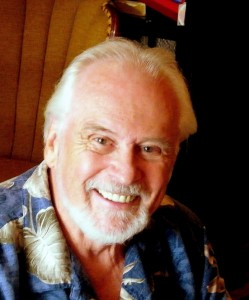
Patrick J. Keane is Professor Emeritus of Le Moyne College and a Contributing Editor at Numéro Cinq. Though he has written on a wide range of topics, his areas of special interest have been 19th and 20th-century poetry in the Romantic tradition; Irish literature and history; the interactions of literature with philosophic, religious, and political thinking; the impact of Nietzsche on certain 20th century writers; and, most recently, Transatlantic studies, exploring the influence of German Idealist philosophy and British Romanticism on American writers. His books include William Butler Yeats: Contemporary Studies in Literature (1973), A Wild Civility: Interactions in the Poetry and Thought of Robert Graves (1980), Yeats’s Interactions with Tradition (1987), Terrible Beauty: Yeats, Joyce, Ireland and the Myth of the Devouring Female (1988), Coleridge’s Submerged Politics (1994), Emerson, Romanticism, and Intuitive Reason: The Transatlantic “Light of All Our Day” (2003), and Emily Dickinson’s Approving God: Divine Design and the Problem of Suffering (2007).
.
.




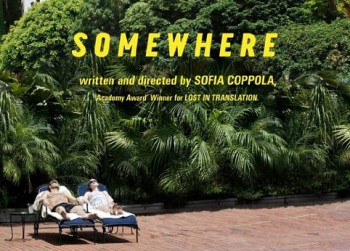


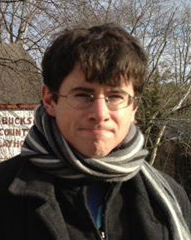
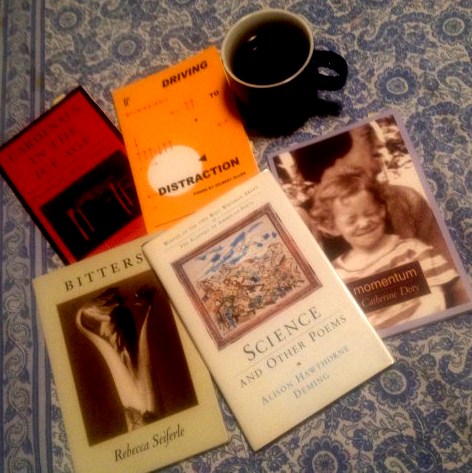




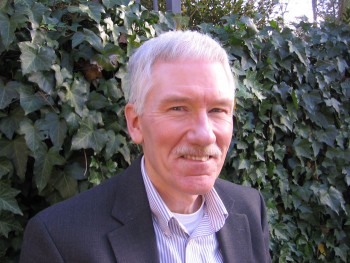

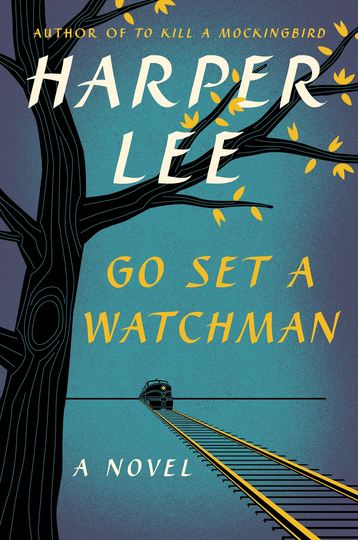
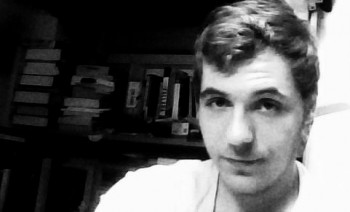



















 From Harper’s Monthly, February 1901. Library of Congress, Prints and Photographs Division, Washington, D.C.
From Harper’s Monthly, February 1901. Library of Congress, Prints and Photographs Division, Washington, D.C. John Wheelwright, Hutchinson’s brother-in-law. Attributed to John Coles Sr. (1749-1809) who copied the image from a c. 1677 portrait by an unknown artist. via American Antiquarian Society via Wikipedia
John Wheelwright, Hutchinson’s brother-in-law. Attributed to John Coles Sr. (1749-1809) who copied the image from a c. 1677 portrait by an unknown artist. via American Antiquarian Society via Wikipedia John Cotton, Hutchinson’s mentor. Original unknown – Samuel Drake, History of Boston Antiquities, 1856, opposite p. 158. via Wikipedia
John Cotton, Hutchinson’s mentor. Original unknown – Samuel Drake, History of Boston Antiquities, 1856, opposite p. 158. via Wikipedia Massacre from William Cullen Bryant’s A Popular history of the United States, 1878
Massacre from William Cullen Bryant’s A Popular history of the United States, 1878 Hutchinson Statue, Massachusetts State House, Boston, Cyrus Edwin Dallin
Hutchinson Statue, Massachusetts State House, Boston, Cyrus Edwin Dallin

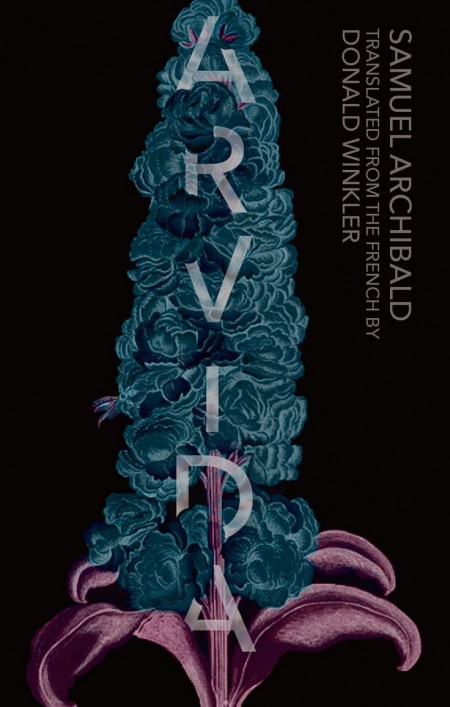
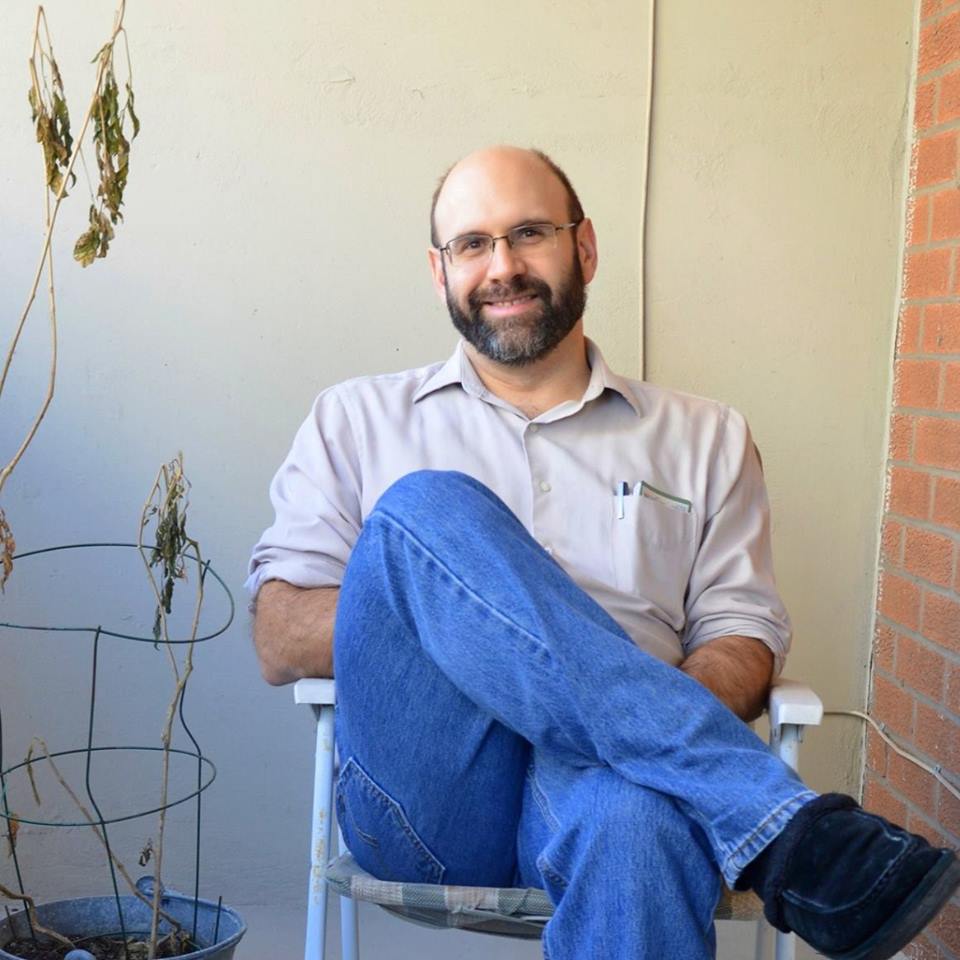

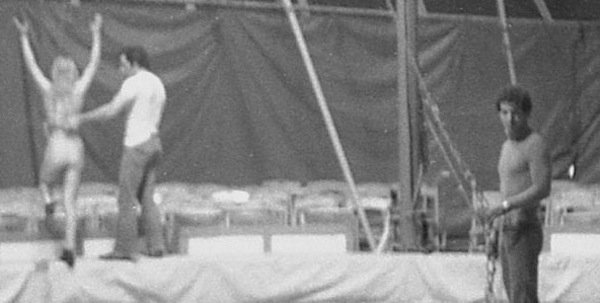







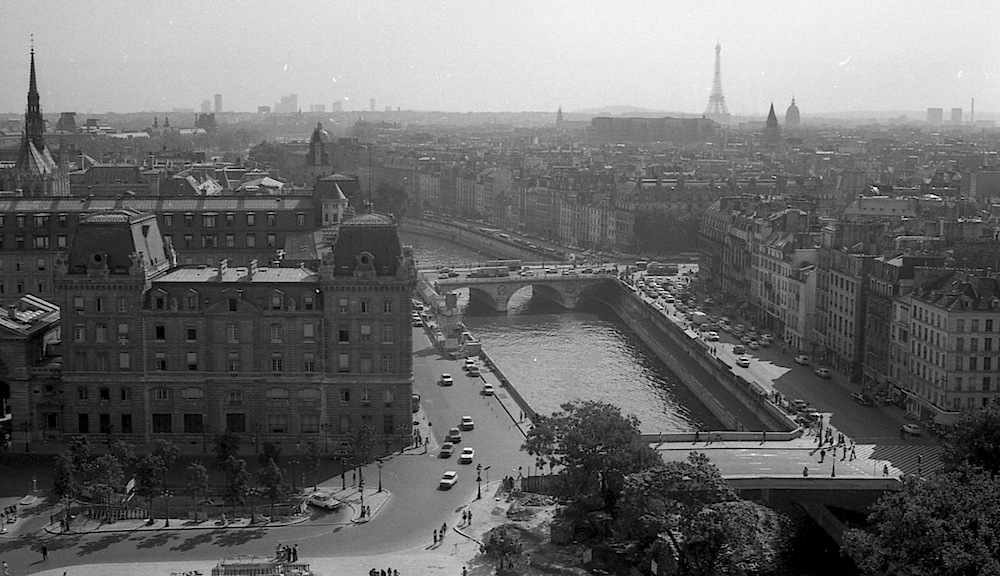



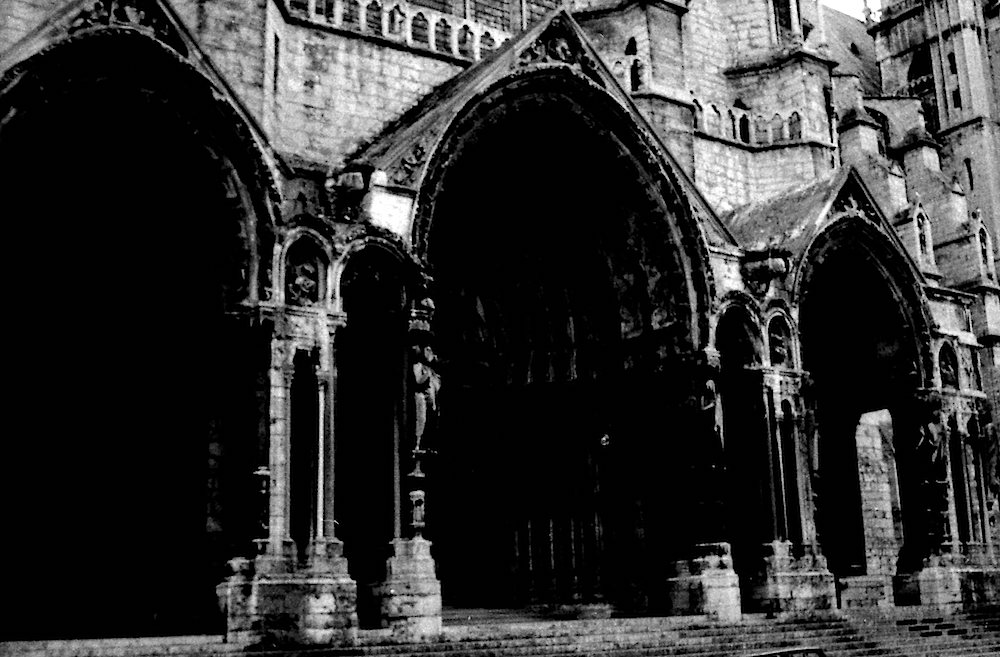
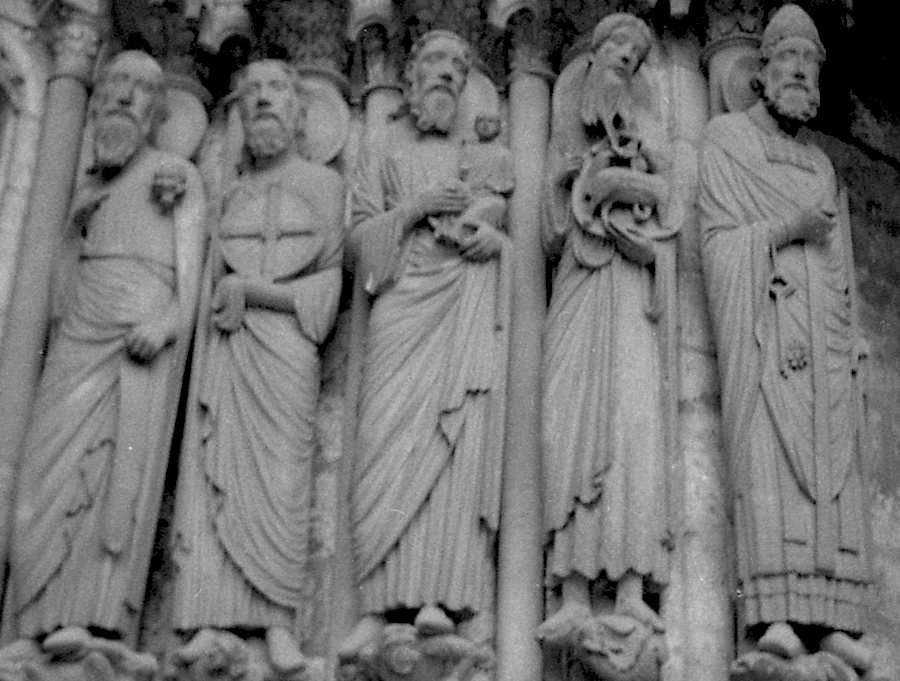



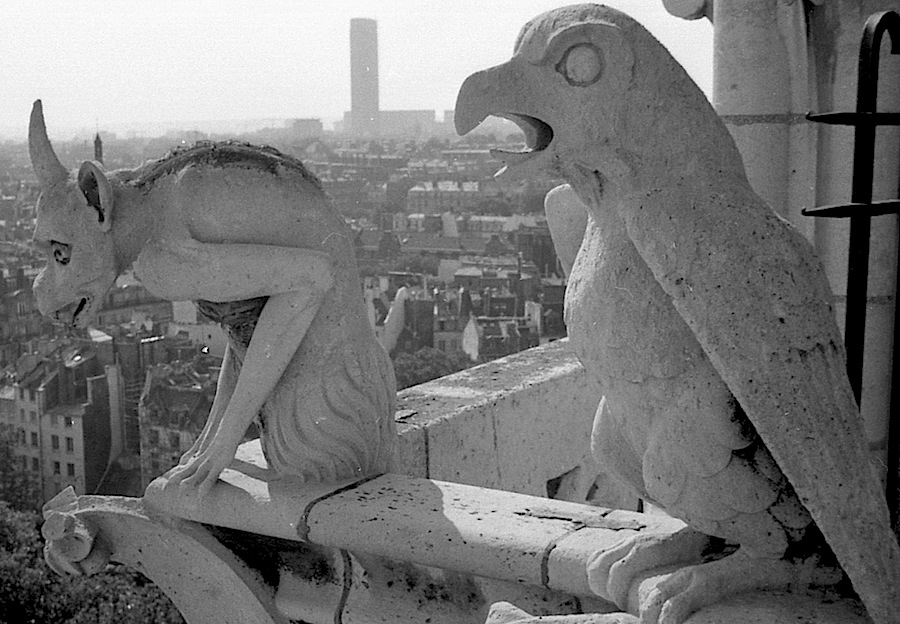
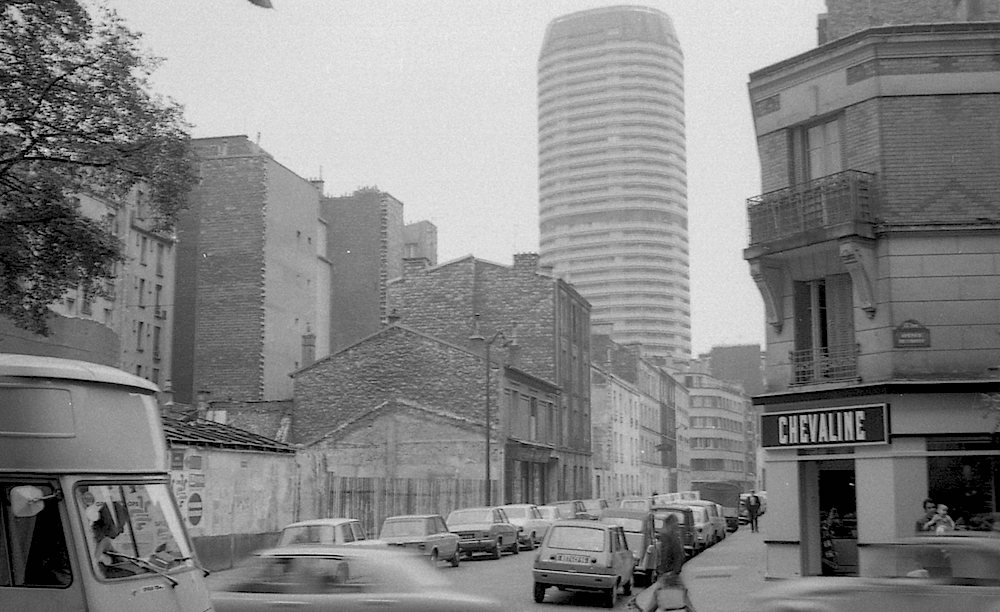

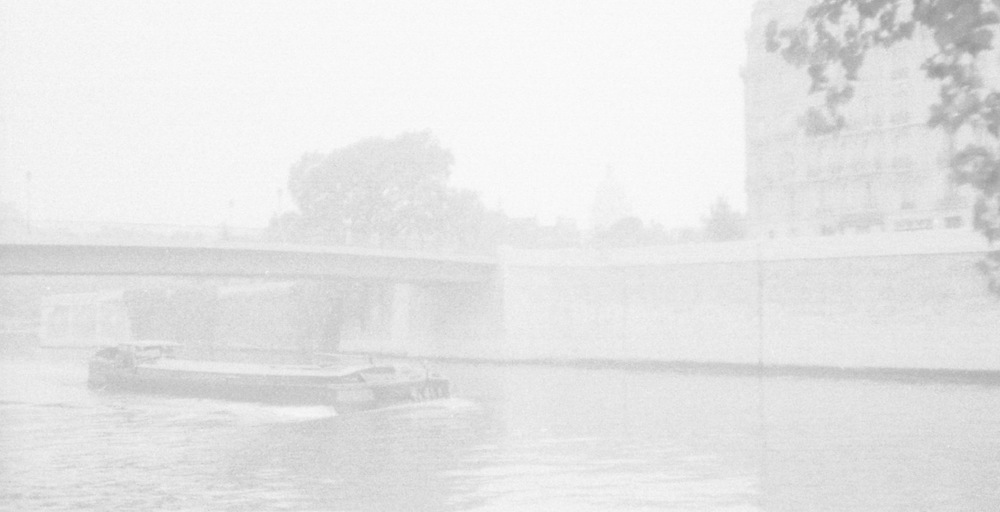


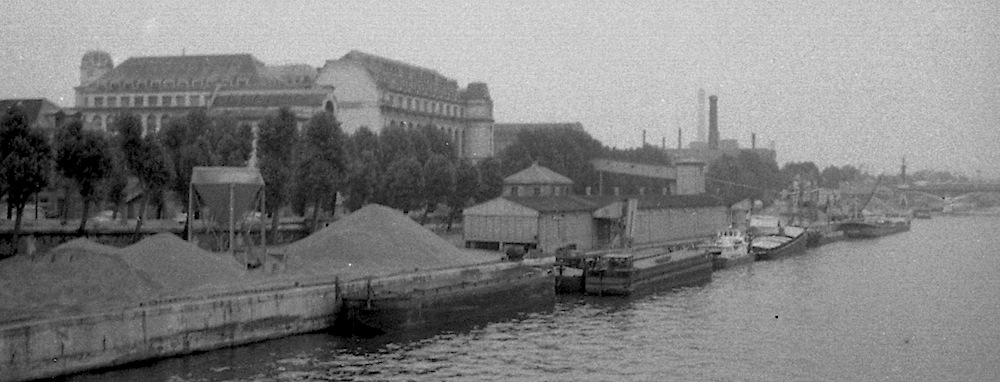

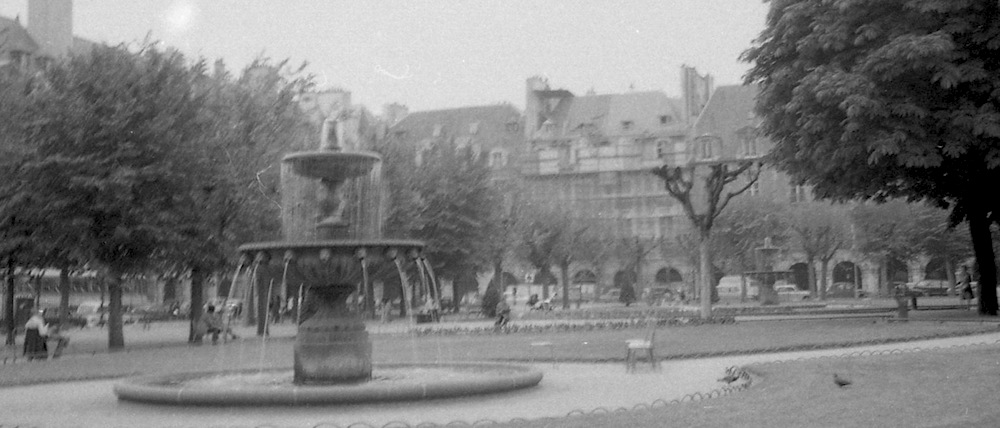
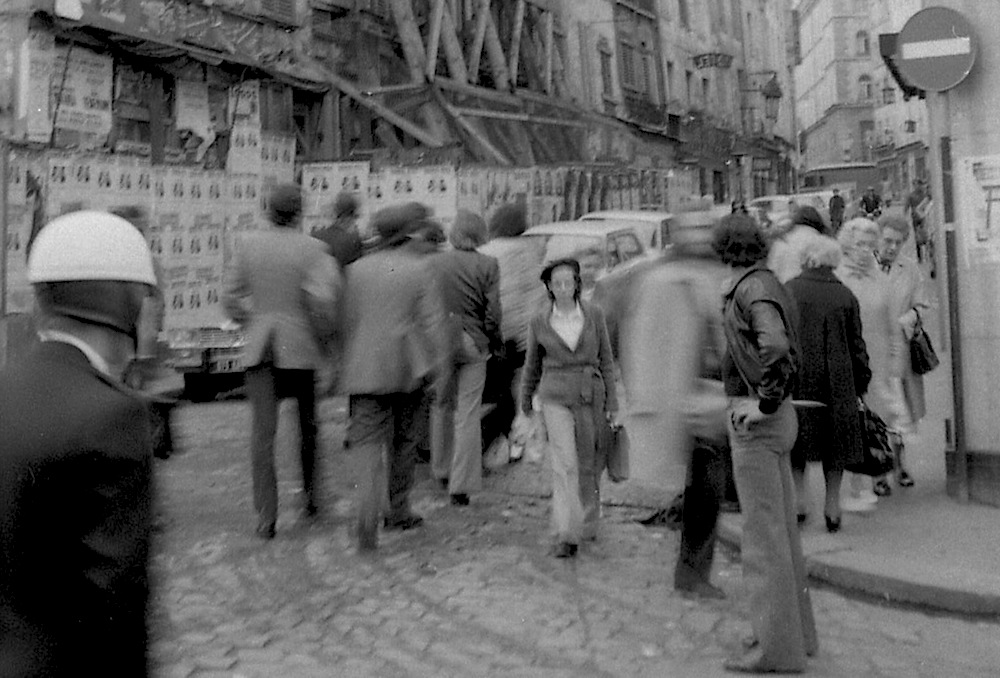
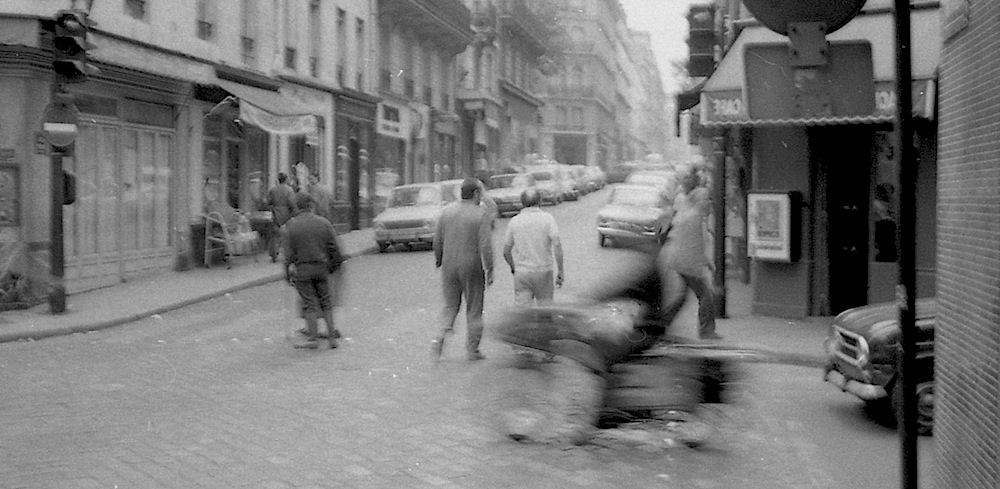


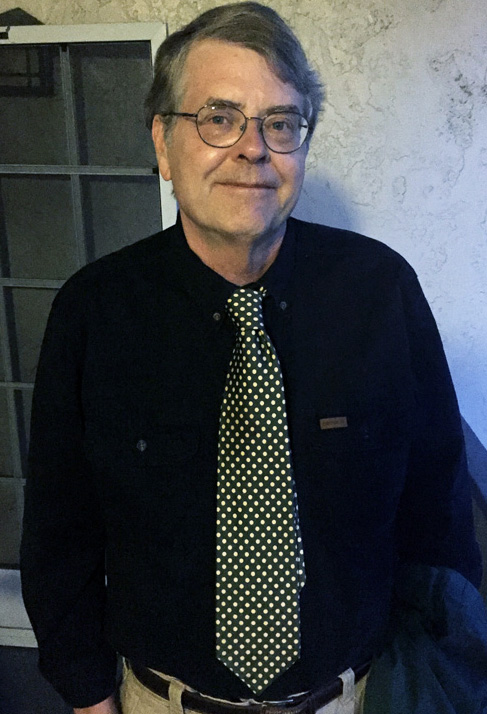









 Sun hats, 1949
Sun hats, 1949

 On a swing with my sister
On a swing with my sister Rag dolls & curling rags, 1949
Rag dolls & curling rags, 1949 With my big sister and a friend
With my big sister and a friend The Railway Institute
The Railway Institute Friends, 1950
Friends, 1950 Me aged 7 with a small cousin
Me aged 7 with a small cousin

